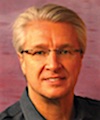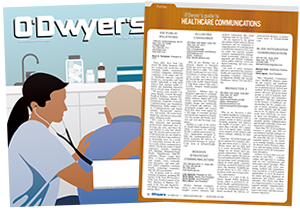 Joel Machak Joel Machak |
At risk of your scorn, I’d like to remind you that for many, like that innocent soul I was then, the term “health communications” is often an oxymoron. I hope to help fix that.
A convergence of clarity
|
|
At Crosby, two of our practice areas have found a happy convergence in the area of language, or more precisely, in the area of clear, effective writing. Two of our specialties are health care and government communications. Much of our writing for federal agencies requires the use of Plain Language principles. And that’s a good thing, because it also leads to better writing for health communications.
The plain language moon shot
The Plain Writing Act of 2010 requires that federal agencies put all new and revised documents into plain language. I believe that unsung piece of legislation was a breakthrough for effective communications. For health communicators in particular, the plain language guidelines should be seen as a boon for health literacy. One small step and all that.
Like the moon landing, getting there wasn’t easy. People have bemoaned difficult, overly complex writing for ages. In the First Century CE, Cicero said, “When you wish to instruct, be brief; that men’s minds take in quickly what you say, learn its lesson, and retain it faithfully. Every word that is unnecessary only pours over the side of a brimming mind.”
More than brevity
But don’t get me wrong. Plain language is not just about brevity. In fact, when taken too far, brevity can work against effective communication. After all, it is brevity that gives health communications all the jargon and acronyms.
Said most simply, plain language is writing that is easily understood by your readers the first time they read it. The Center for Plain Language states that: “a document, website, or other information is in plain language if the target audience can read it, understand what they read, and confidently act on it.”
That sounds like the health literacy grail to me.
The role of emotions
The unfortunate truth is, every day people make important health decisions based on information that they don’t understand. They get confused and frustrated. Or worse, they recoil into apathy. These emotions can hinder good decisions and positive outcomes.
According to the National Assessment of Adult Literacy, only 12 percent of adults have proficient health literacy. That means nearly nine in ten adults may lack the skills they need to effectively manage their health and take preventive measures to stay healthy.
And this deficit in healtha literacy is not simply because of general literacy, education, or income levels. According to the Institute of Medicine, “Even highly skilled individuals may find healthcare systems too complicated to understand, especially when these individuals are made more vulnerable by poor health.”
This is where plain language offers guidance. It’s not about dumbing-down or writing to a demographic or a reduced grade level. Writing in plain language gives all the necessary information in a way that makes it easy to understand and use.
More than demographics
One of the first principles of plain language is: know your audience. Go beyond the demographics. Take the time to consider the situation, the environment, and the realities of the audience’s life as they encounter your words and images. What is their mental state? Are they facing an illness? Are they stressed or worried? Taking these things into account, it’s a rare moment when you can expect full cognitive engagement from your audience.
More than the moment
And plain language offers benefits beyond the immediate moment. Clear, easy-to-understand writing means less time spent later on clarifications, mistakes, misunderstandings, and explanations. That in turn means fewer complaints, and greater compliance, and a better overall experience for everyone involved.
Helpful tools exist
For the writer in me, I particularly like that plain language is not about feeding your copy into a rote algorithm for a passing score. There is just good, clear writing. For help, there are useful tools and guidelines. If you seek to improve your health communications, I suggest a visit to www.plainlanguage.gov.
The CDC also offers a tool to guide and improve clear communications development.
A real-world story
A day-in-the life experience recently brought health literacy home for me. I was sitting in a doctor’s waiting room, before my annual checkup. Near me sat an elderly couple accompanied by what I guessed was their daughter-in-law. They had just emerged from the doctor’s office shuffling through a variety of printed materials. There were lots of questions between them. There was tension and concern. I had no idea what was going on, but it was also clear that they had no idea what was going on. It was heart-rending.
A moment later, I was finally summoned to my appointment. During my visit, I counted three times when I didn’t completely understand the information given to me. Two were care related, one was insurance related. But it was 11:35 and I had to get back for a 12:00 meeting. And I still had to give at the phlebotomist. No time for chit-chat.
Our shared responsibility
I hope you get the picture. As health communicators, we share a real responsibility. People’s welfare can ride in the balance. Just putting the information out there doesn’t cut it. We need to better appreciate the state of our audience when we ask for the most precious of modern transactions: give me your full engagement and in return I will give you something of value.
It doesn’t often come easy. But with clearer, more empathetic, more compassionate communications, we can do better, for the organizations we support and for the patients who the best care is centered on.
***
Joel Machak is Executive Creative Director at Crosby Marketing Communications.



 Lo Isidro, senior director at Real Chemistry with more than a decade of strategic communications and PA experience, has joined Narrative Strategies.
Lo Isidro, senior director at Real Chemistry with more than a decade of strategic communications and PA experience, has joined Narrative Strategies. Nelson Fernandez, former North American chair of APCO Worldwide and managing director of Burson-Marsteller, has joined Volunteers in Medicine Berkshires as director of communications and PA.
Nelson Fernandez, former North American chair of APCO Worldwide and managing director of Burson-Marsteller, has joined Volunteers in Medicine Berkshires as director of communications and PA. Lilit Bargar, who was most recently an EVP in the healthcare practice at Weber Shandwick, comes on board at GCI Health as EVP, corporate practice lead.
Lilit Bargar, who was most recently an EVP in the healthcare practice at Weber Shandwick, comes on board at GCI Health as EVP, corporate practice lead.
 Five ways that successful thought leaders are made.
Five ways that successful thought leaders are made.


 Have a comment? Send it to
Have a comment? Send it to 
No comments have been submitted for this story yet.